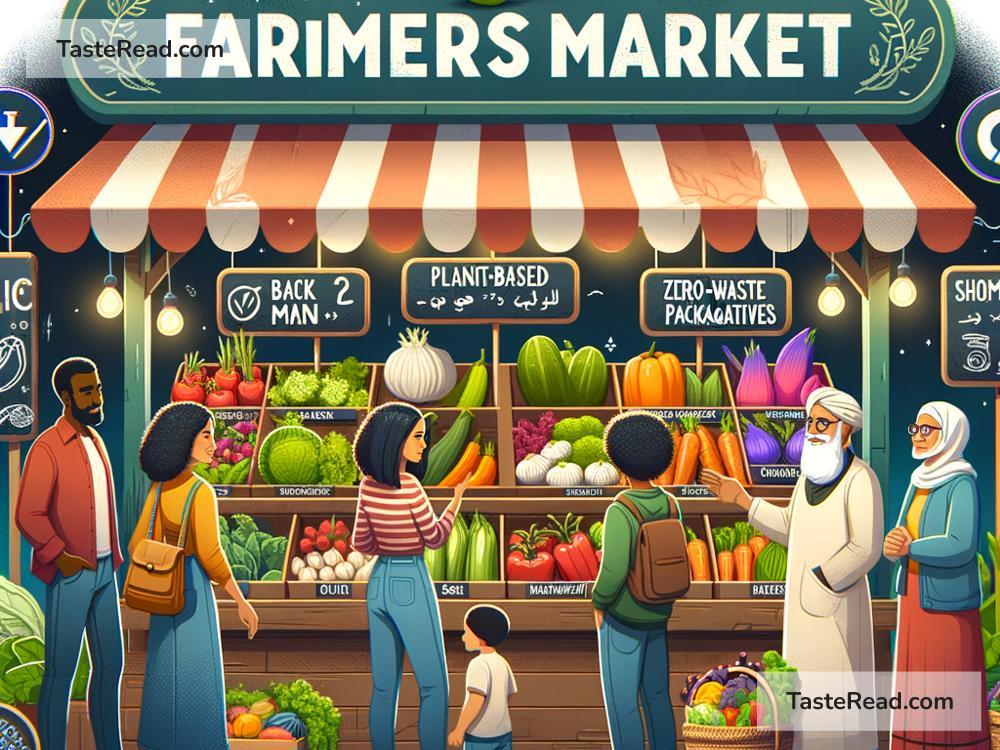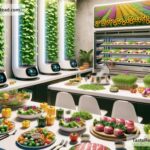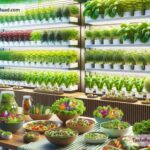The Future of Food: Building a Sustainable System for Everyone
Food is one of the most important parts of our lives. It nourishes us, brings people together, and is key to a healthy and productive society. But as the world’s population continues to grow, the way we produce, distribute, and consume food needs to change. Currently, many food systems harm the environment, waste resources, and fail to meet the needs of all people. So, how do we fix that? Let’s explore the future of food and how sustainable systemic models can make a big difference.
The Problem: Why Change Is Necessary
Today’s global food system faces big challenges. There are more than 8 billion people living on the planet, and experts say that number could rise to nearly 10 billion by 2050. Feeding everyone will require smarter solutions than what we have now.
Here are some of the main problems with food systems today:
-
Environmental Damage: Industrial farming practices use large amounts of land, water, and chemicals. Forests are cleared to make farmland, which harms ecosystems and increases carbon emissions. Agriculture also contributes to climate change through methane gas from livestock and nitrogen runoff from fertilizers.
-
Food Waste: About one-third of all food produced globally is wasted. This waste happens at farms, factories, supermarkets, and even in our own homes. When food is thrown away, so are the resources used to produce it, like water and energy.
-
Inequality and Hunger: While some people have access to cheap and abundant food, others struggle with hunger and malnutrition. There’s enough food in the world to feed everyone, but uneven distribution and poverty prevent millions from having enough to eat.
-
Unhealthy Choices: Processed foods and sugary snacks are widely available, leading to health issues like obesity, diabetes, and heart disease. Many people don’t have access to fresh fruits and vegetables, either because they cost too much or because they aren’t available nearby.
All of these issues show why the current food system isn’t working well. We need to create new models that focus on sustainability, health, and fairness.
What Does a Sustainable Food System Look Like?
A sustainable food system is one that works for people, the planet, and future generations. It relies on practices that minimize harm, use resources wisely, and ensure everyone has access to nutritious food. Here are some key ideas that are shaping the future of food:
1. Regenerative Agriculture
Instead of industrial farming, many experts are advocating for regenerative agriculture. This approach focuses on improving soil health, increasing biodiversity, and reducing chemical use. By planting cover crops, rotating crops, and raising animals responsibly, farms can produce food while also restoring ecosystems and lowering carbon emissions.
2. Alternative Proteins
Meat production uses a lot of land, water, and energy—and generates large amounts of greenhouse gases. As a result, researchers are developing alternative proteins, like plant-based meat, lab-grown meat, and insect protein. These options can offer the taste and nutrition of traditional meat but with far less impact on the planet.
3. Urban Farming and Vertical Farms
Urban farming is growing food in cities, often through rooftop gardens or small community plots. Vertical farms take it a step further by stacking crops in layers inside buildings. Using advanced technology, these farms can grow food year-round, save water, and reduce the transportation needed to get food to cities.
4. Reducing Food Waste
Tackling food waste is an important step toward a sustainable food system. Businesses and individuals can improve storage, repurpose leftovers, and donate surplus food to those in need. Governments can support programs that make reducing food waste easier.
5. Supporting Local Foods
Buying food from local farms or markets reduces the environmental impact of transporting food long distances. It also supports the local economy and helps people get fresher, healthier options. Community-supported agriculture (CSA) programs are great examples of how this can work.
How Technology Will Help
Technology will play a big role in building the future of food. Innovations like drones, artificial intelligence, and blockchain can help farmers become more efficient, track food supplies, and predict weather changes. Apps can connect consumers directly to farmers, reducing middlemen and increasing transparency. Robots might even be used to harvest crops or pack food!
Lab-grown meat and precision fermentation are also making headlines. These technologies use science to create food that mimics traditional options but without the environmental harm. If scaled properly, they could transform the way we think about meat, dairy, and even seafood.
Working Together for Change
Creating a sustainable food system will require global collaboration. Governments, businesses, farmers, scientists, and consumers all need to play their part. Policies should support small-scale farmers, protect natural resources, and reduce subsidies for harmful practices. Companies should invest in eco-friendly solutions and commit to fair labor practices. And as consumers, we can make choices that align with sustainability, like eating less meat, buying local, and reducing waste.
Education is another key piece. By teaching people about the importance of sustainable food systems, we can empower more individuals to make informed choices. Schools, community programs, and social media campaigns can all help spread the message.
A Tasty and Sustainable Future
The future of food can be bright, but it will require creativity, innovation, and hard work. Sustainable systemic models can fix the problems of today and give future generations access to healthy, environmentally-friendly food. From regenerative farming to lab-grown meat, the possibilities are exciting.
As individuals, we can start making a difference right now. Choose sustainable options when possible, support local farmers, and spread awareness about the importance of a better food system. Together, we can rewrite the story of food—and ensure that every meal we share helps care for the planet, its people, and its future.
What changes would you like to see in our food systems? Let us know in the comments below!


